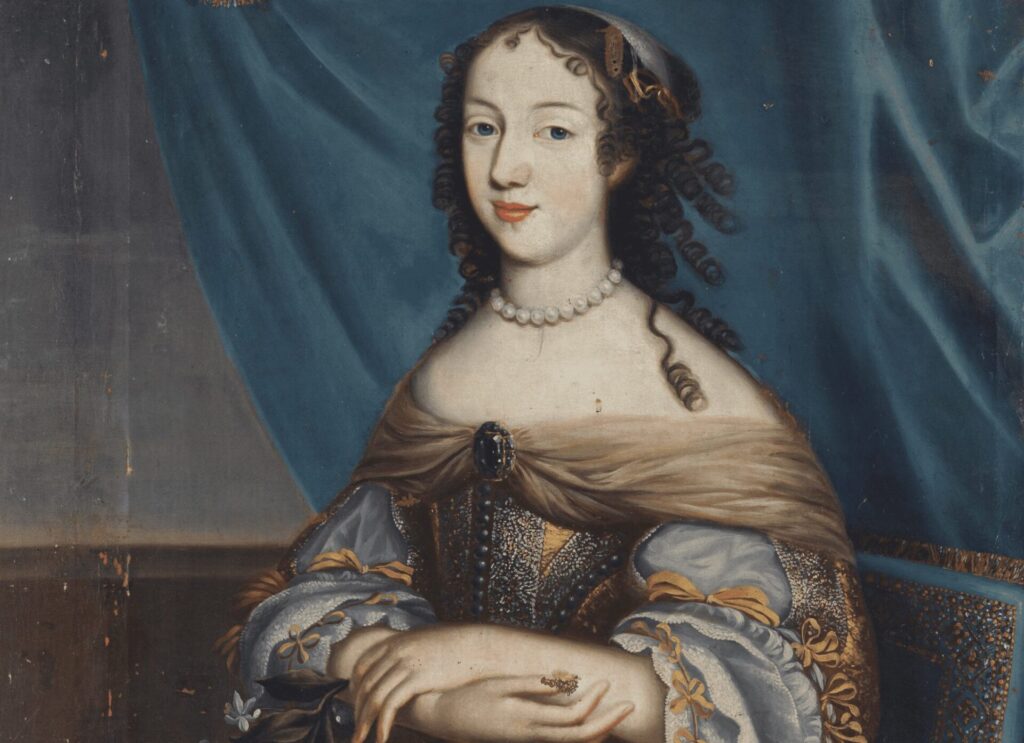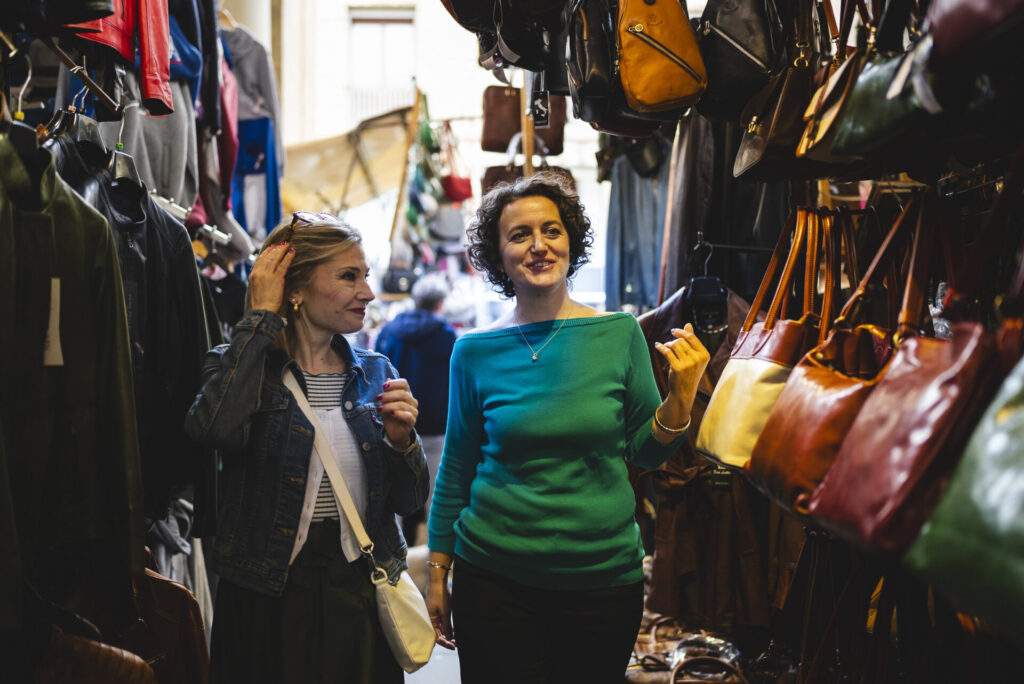Daughter of Gaston, Duke of Orléans, Marguerite-Louise belonged to the French nobility and was among the top candidates to be married to a European prince destined to ascend the throne, such as Cosimo III of the Medici family.
It was Cardinal Pierre de Bonsi, the Tuscan representative in Paris, who handled the preliminary arrangements for organizing the wedding in Florence. He was first asked to provide detailed information about the young woman, whom he described as beautiful, kind, patient, and obedient. These qualities convinced Grand Duke Ferdinando II de’ Medici that Marguerite-Louise was the ideal bride for his son Cosimo.
In January 1661 the marriage contract was signed.
Marguerite immediately showed herself to be opposed to leaving Paris to go to Tuscany. The truth was that Paris, besides offering all kinds of entertainment, was the place where the man she was in love with—Charles of Lorrain—lived. The situation became difficult. Despite Cardinal Bonsi assuring from Paris that everything was going well, the girl wanted nothing to do with moving to Florence, claiming that all of Tuscany wasn’t worth even a single neighborhood of Paris.
Ferdinando then asked King Louis XIV to intervene with the young woman, and only then did Marguerite-Louise agree to leave France.
A sad farewell to France and the arrival in Tuscany
In the spring of 1661, the future Grand Duchess of Tuscany boarded a galley in Marseille, accompanied by a fleet of five other armed ships, to guard against possible pirate attacks. On June 12th of the same year, the ship docked in the port of Livorno. This was Marguerite-Louise’s first contact with a land she would never grow to love—in fact, she hated Tuscany with all her heart, as leaving France also meant leaving behind the man she loved. A few days later, she arrived in Florence, where she was welcomed by her future husband, Cosimo III, his father Ferdinando II, and about a hundred courtiers and servants.
Unhappy marriage
On June 20th, the wedding was celebrated in the Cathedral of Santa Maria del Fiore. From the very first wedding night, Marguerite reported that her husband had proven to be a disappointing lover. Once the wedding celebrations were over, the young couple saw each other very rarely. Moreover, Cosimo III did nothing to make the marriage more pleasant. Their relationship deteriorated day by day, eventually leading to an irreparable separation. Days of mutual indifference were followed by fierce clashes and acts of spite, endless quarrels in which the couple seemed to compete in hurting each other, as if in a tournament.
In the meantime, Ferdinando realized that the description of Marguerite-Louise provided by Cardinal Bonsi had been completely false. His only hope was that the unhappy couple would produce the offspring the Medici needed to continue their reign.
The birth of Ferdinando III
On August 6th, 1663, Marguerite-Louise gave birth to a son, named Ferdinando. As was customary, he was immediately entrusted to a wet nurse. The mother planned to spend only a few minutes a day with the child and had a French midwife brought in from Paris.
In the meantime, the nineteen-year-old princess grew increasingly restless. And since her husband Cosimo was unable to keep her under control, her father-in-law Ferdinando stepped in. Convinced that her French maids were encouraging her behavior, he dismissed them all at once and replaced them with Tuscan attendants.
It was at this point that Marguerite unleashed all her fury, even defying orders from King Louis XIV of France, who from Paris urged her to behave like a lady of her rank. She managed to convince the King’s officials that she was in the right and that everyone around her was doing their utmost to humiliate her. The future Grand Duchess of Tuscany seemed to possess an exceptional strength of character and became increasingly unyielding in her convictions. She went so far as to make the atmosphere at the Pitti Palace even more unbearable by forbidding her husband from entering her chambers. When she was ordered to move out of Florence—first to the Villa of Lappeggi and then to Poggio a Caiano—she seemed pleased.
In the meantime, she continued to send messages to the King, begging him to allow her to return to Paris. The sovereign, however, remained firm and rejected all her requests, urging her to be a wise wife.
The return to Florence and the birth of Anna Maria Luisa
In October 1665, the restless princess, having returned to the Pitti Palace, seemed willing to make peace with her husband and father-in-law, and in August 1667 she gave birth to a daughter named Anna Maria Luisa. Immediately after the birth of the second child, the calm ended and Marguerite-Louise’s restlessness resurfaced. The quarrels between the spouses and the outbursts of the capricious lady resumed. It was then that Ferdinando decided to send his son on a long journey to various European courts.
In 1670, upon the death of Ferdinand, Cosimo III became the new Grand Duke of Tuscany and Marguerite officially the new Grand Duchess. There was hope for a truce between the two with the birth of their third child, Giangastone, on May 24, 1671. But this was not to be. Pretending to be ill, the woman again asked the King to allow her to return to France, and the request was once again denied. After this last attempt failed, the Grand Duchess decided to retire to the villa of Poggio a Caiano.
The Villa of Poggio a Caiano
Marguerite-Louise, retired to the villa of Poggio a Caiano with her entire entourage, decided to have a small theater built to entertain herself and her court. Even today, in the music room, one can still see the stage, the scenery, and the musical instruments.
Her husband accepted Marguerite-Louise’s move to Poggio a Caiano, near Florence, only after it had already taken place, but he insisted that she be watched at all times. The little theater was for her a place of entertainment and a relief from the forced confinement imposed by the Medici court. In June 1674, the King finally consented to her return to France, but required her to reside in a convent—one that the clever and determined Marguerite-Louise would find a way to transform into a private palace where she could host social gatherings.
To learn more about the story of Marguerite-Louise and Cosimo III, you can book our Medici Villas tour, where we will visit the Villa of Poggio a Caiano and see the private little theater of the unhappy French lady.



